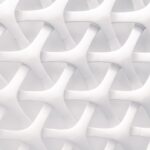When you consider laser hair removal for your face, it’s essential to grasp how the procedure works. Laser hair removal utilizes concentrated beams of light to target the pigment in hair follicles. This process effectively damages the follicles, inhibiting future hair growth.
The treatment is particularly popular for areas like the upper lip, chin, and cheeks, where unwanted hair can be a source of frustration. As you undergo this treatment, the laser’s energy is absorbed by the melanin in your hair, leading to a gradual reduction in hair density over multiple sessions. The procedure is generally quick and can be performed in a medical office or a specialized clinic.
Depending on the area being treated, sessions can last anywhere from a few minutes to an hour. Many individuals find that the sensation of the laser feels similar to a rubber band snapping against the skin, which is often manageable with minimal discomfort. As you prepare for your sessions, it’s crucial to avoid sun exposure and certain skincare products that could irritate your skin.
Understanding these aspects will help you set realistic expectations and prepare adequately for your laser hair removal journey.
Key Takeaways
- Laser hair removal on the face targets hair follicles with concentrated light energy to inhibit future hair growth.
- Proper post-treatment care is crucial for maximizing the effectiveness of laser hair removal and minimizing potential side effects.
- It is not recommended to wax after laser hair removal as it can interfere with the hair follicles targeted by the laser.
- Risks and considerations of laser hair removal on the face include potential skin irritation, changes in skin pigmentation, and the need for multiple sessions.
- Alternative hair removal methods to consider after laser hair removal include shaving, tweezing, and depilatory creams.
The Importance of Post-Treatment Care
After undergoing laser hair removal, your skin requires special attention to ensure optimal healing and results. Post-treatment care is vital because your skin may be sensitive and prone to irritation following the procedure. You should avoid direct sunlight for at least a week after treatment, as your skin will be more susceptible to sunburn.
Applying a broad-spectrum sunscreen with a high SPF is essential to protect your skin from harmful UV rays. Additionally, wearing protective clothing can further shield your skin during this sensitive period. Hydration is another critical aspect of post-treatment care.
Keeping your skin moisturized can help alleviate any dryness or irritation that may occur after the procedure. You might want to use gentle, fragrance-free moisturizers to avoid any potential allergic reactions or further irritation. It’s also advisable to refrain from using harsh exfoliants or active ingredients like retinoids for a few days post-treatment.
By following these guidelines, you can enhance your healing process and maximize the effectiveness of your laser hair removal.
Can You Wax After Laser Hair Removal?
You may wonder about the timing of waxing after undergoing laser hair removal. The short answer is that it’s generally not recommended to wax the treated areas immediately after your sessions. Waxing involves pulling hair out from the root, which can interfere with the results of laser hair removal.
Since the laser targets the hair follicles, removing hair through waxing can disrupt the follicle’s ability to absorb the laser energy effectively during subsequent treatments. Typically, it’s best to wait until your skin has fully healed before considering waxing again.
If you feel that you need to remove any stray hairs in between sessions, consider alternative methods such as shaving or using a gentle depilatory cream that doesn’t irritate your skin. By being cautious about how you manage hair removal post-treatment, you can ensure that you achieve the best possible results from your laser hair removal experience.
Risks and Considerations
| Category | Risks and Considerations |
|---|---|
| Financial | Market volatility, currency exchange rates, and economic downturns |
| Operational | Supply chain disruptions, technology failures, and regulatory changes |
| Legal and Compliance | Lawsuits, fines, and non-compliance with regulations |
| Reputational | Public relations crises, negative media coverage, and customer dissatisfaction |
While laser hair removal is generally considered safe, it’s essential to be aware of potential risks and considerations before proceeding with treatment. One of the primary concerns is skin irritation, which can manifest as redness, swelling, or even blistering in some cases. These side effects are usually temporary but can be uncomfortable.
It’s crucial to discuss any pre-existing skin conditions or sensitivities with your practitioner to tailor the treatment to your specific needs. Another consideration is the effectiveness of laser hair removal on different skin and hair types. The procedure tends to work best on individuals with light skin and dark hair due to the contrast in pigmentation.
If you have lighter hair or darker skin, you may require specialized equipment or techniques for optimal results. Additionally, hormonal changes can affect hair growth patterns, so it’s essential to have realistic expectations regarding the outcome of your treatments. By understanding these risks and considerations, you can make an informed decision about whether laser hair removal is right for you.
Alternative Hair Removal Methods
If you’re exploring options for facial hair removal beyond laser treatments, several alternatives are available that may suit your needs better. Traditional methods such as shaving are popular for their convenience and ease of use. Shaving can be done quickly at home and doesn’t require any downtime, making it an attractive option for those with busy lifestyles.
However, it’s important to use a clean razor and shaving cream designed for sensitive skin to minimize irritation. Another alternative is threading, a technique that involves using a thin thread to remove hair from the follicle level. This method is particularly effective for shaping eyebrows and removing fine facial hair without causing significant irritation.
Waxing remains a popular choice as well; however, as previously mentioned, it’s essential to wait until your skin has fully healed from laser treatments before considering this method again.
How Long to Wait Before Waxing
Determining how long you should wait before waxing after laser hair removal is essential for ensuring both safety and effectiveness. Generally speaking, it’s advisable to wait at least two weeks after your last laser session before considering waxing again. This waiting period allows your skin time to heal and reduces the risk of irritation or adverse reactions that could arise from combining these two methods too closely together.
During this time, pay attention to how your skin responds post-treatment. If you notice any lingering redness or sensitivity, it may be wise to extend your waiting period further. Each individual’s healing process varies; therefore, listening to your body and consulting with your practitioner can help guide your decision on when it’s safe to resume waxing.
By being patient and allowing adequate time for recovery, you can ensure that your skin remains healthy while achieving the desired results in hair removal.
Tips for Safe Waxing After Laser Hair Removal
Once you’ve determined that it’s safe to wax after laser hair removal, there are several tips you should keep in mind to ensure a safe experience. First and foremost, choose a reputable salon or esthetician who understands the nuances of working with clients who have undergone laser treatments. They should be familiar with proper techniques and products that minimize irritation on sensitive skin.
Before waxing, consider doing a patch test on a small area of skin to gauge how your body reacts post-laser treatment. This precaution can help identify any potential adverse reactions before committing to a full waxing session. Additionally, ensure that your skin is clean and free from any lotions or oils that could interfere with the waxing process.
After waxing, apply a soothing lotion or aloe vera gel to calm any redness or irritation that may occur. By following these tips, you can enjoy a smoother experience while minimizing discomfort.
Consulting with a Professional
Before embarking on any hair removal journey—whether through laser treatments or waxing—consulting with a professional is crucial for achieving optimal results tailored to your unique needs. A qualified practitioner can assess your skin type and hair characteristics, providing personalized recommendations based on their expertise. They can also address any concerns or questions you may have about the procedures involved.
During this consultation, don’t hesitate to discuss your goals and expectations regarding hair removal outcomes. A professional will help set realistic timelines and inform you about what to expect during each stage of treatment. They can also guide you on post-treatment care and when it’s appropriate to resume other methods like waxing after laser sessions.
By seeking professional advice, you empower yourself with knowledge and support throughout your hair removal journey, ensuring that you make informed decisions every step of the way. In conclusion, understanding laser hair removal on the face involves recognizing its benefits and limitations while prioritizing post-treatment care for optimal results. Knowing when and how to safely wax after such treatments is equally important in maintaining healthy skin and achieving desired outcomes in hair removal methods.
By considering alternative options and consulting with professionals along the way, you can navigate this journey confidently and effectively.
If you are considering waxing after laser hair removal on your face, it is important to consult with a professional to ensure you are not causing any damage to your skin. According to an article on In Laser Hair Removal, it is generally recommended to avoid waxing for a period of time after laser hair removal to allow the skin to heal properly. This article provides valuable information on the best practices for maintaining smooth and hair-free skin after laser treatments.
FAQs
What is laser hair removal on the face?
Laser hair removal on the face is a cosmetic procedure that uses a laser to target and remove unwanted facial hair. It is a popular method for long-term hair reduction and can be used on areas such as the upper lip, chin, and cheeks.
Is it ok to wax after laser hair removal on the face?
It is generally not recommended to wax after laser hair removal on the face. Waxing can disrupt the hair follicles and interfere with the effectiveness of the laser treatment. It is best to follow the specific aftercare instructions provided by your laser hair removal technician.
What are the potential risks of waxing after laser hair removal on the face?
Waxing after laser hair removal on the face can increase the risk of skin irritation, burns, and pigmentation changes. It can also lead to ineffective results from the laser treatment and may require additional sessions to achieve the desired outcome.
What are the alternative hair removal methods after laser hair removal on the face?
After laser hair removal on the face, alternative hair removal methods include shaving, tweezing, or using depilatory creams. These methods are less likely to interfere with the results of the laser treatment and can be used as directed by your skincare professional.








